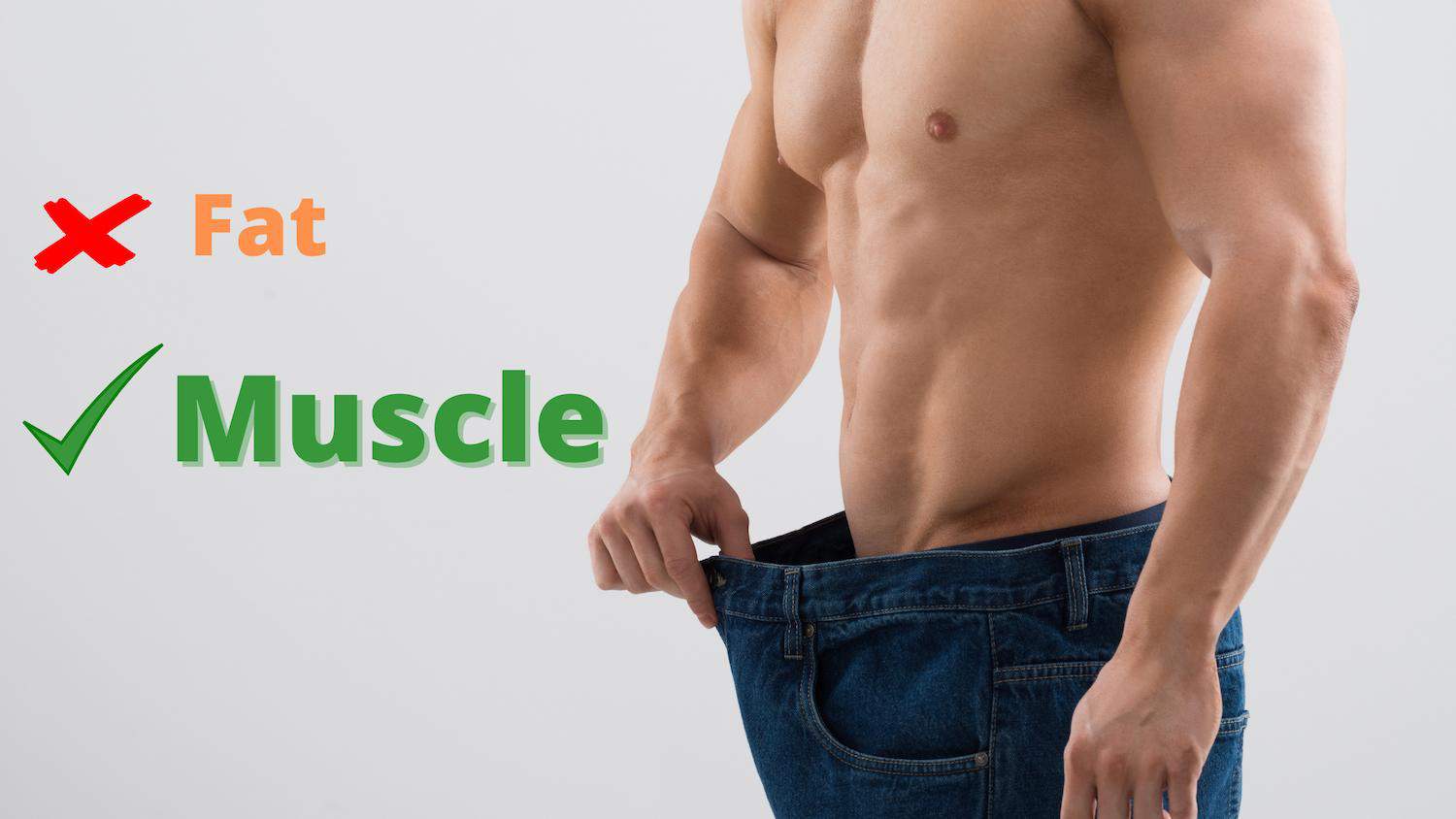Burning fat and preserving muscle at the same time can be challenging, but that does not mean it is not achievable. You need a strategic approach both in terms of what you eat and the exercises you engage in.
In this article, you will learn several ways to lose fat without losing muscle. These tips, incorporated together, will help you achieve your ideal weight while preserving muscle.
Table of Contents
Key Takeaways
- You can lose fat without losing muscle by incorporating strength training workouts to facilitate muscle maintenance and growth.
- The diet plays a significant role in the results. Eating carbs after a workout, maintaining a moderate calorie deficit, and eating more protein are some of the ways you can keep your diet in check.
- Rest and sleep are essential for muscle maintenance, and fat loss as the change occurs while the body rests.
How to Lose Fat Not Muscle
Mix Strength and Muscle Building Exercises
If you are purely strength training, it would be best to incorporate muscle-building activities to balance both. Strength training on its own delivers impressive results as far as increasing your strength and lifting heavy goes, but it does not directly maximize how much muscle you add.
The idea is to combine strength training and muscle-building routines to gain the best of both worlds. For example, you can lift heavy for five reps, rest for 20 seconds, lift the same weight three more times, rest again for 20 seconds, and finish with two reps of the same weight.
Such a routine increases the time in tension resulting in the growth of your muscles. Additionally, you burn fat in the process, trimming you down without consuming the muscles.
Eat More Protein
Protein is an essential component of the muscle-building process. You want to ensure you include lean sources of protein in your diet. Additionally, you need to add more than usual to cater to the demand of the muscle growth process.
Protein boosts your metabolism, and its filling nature prevents you from overeating. On this note, you cut back on the calories and fat while providing an essential nutrient for growing muscle.
Ideally, you should eat at least 1 gram of protein per pound of body weight [1]. Ensure the protein you eat comes from clean sources such as lean meats, nuts, eggs, and fish.
Consider Slow Aerobic Cardio
If you are on a fat loss program, cardio is inevitable. However, the kind of cardio you incorporate into your routine can make or destroy your muscle. Balancing between losing fat and maintaining muscle requires slow aerobic exercise such as walking, cycling, or jogging.
Going slow ensures you maintain an easy pace that uses your fatigue-resistant muscle fibers. This will facilitate more blood circulation to help clear lactic acid, increasing your endurance during intense workouts.
Eat Carbs After Workouts
Most people on a fat loss journey perceive carbs as evil. What they do not know is that the body needs carbs for energy, especially if you are lifting heavy.
After an intense muscle-building workout, your muscle fibers are torn and damaged, and your energy is most likely depleted. Staying away from carbs will hurt your recovery resulting in lower endurance during the following workouts.
After your workout, your metabolism is higher than other times, making it easier for the body to tolerate carbs. Additionally, your insulin sensitivity, the body’s ability to take carbs, is the highest. Therefore, you are less likely to pile on calories after exercise.
Go for carbs such as baked potatoes, sweet potatoes, or rice to fuel the recovery process. Your body needs an energy boost after workouts, which will come in handy the next time you need to work out.
Quality Sleep
Sleep and rest are as important as the hours you spend at the gym. If you do not sleep enough, your body will not have adequate time to recover and rejuvenate in readiness for the next day or workout.
During the cutting phase, you want to ensure you are sleeping a minimum of 8 hours. Remember, you are putting your body through a challenging phase of restricting calories and lifting heavyweights. It needs to rest and recover, allowing the muscles to rebuild [2].
The body naturally secretes the growth hormone at all times, but it hikes while you sleep. When you sleep your deepest, you facilitate more release of the growth hormone, which is essential for muscle recovery and growth.
Pay Attention to your Calorie Deficit
It is easy to go ham with your diet and starve your body of calories it needs even when you are losing weight. Going on a crash diet will result in muscle loss as the sudden change in the calories will have the body run to the muscles for energy.
The body requires enough nutrients to recover while contributing to your immune system.
It can be challenging to balance the calorie deficit with your workout routine, but you should be good to go as long as you keep a moderate number. Consider a deficit of only 500 calories at the start to give your body time to adapt to the slight change.
This deficit is right to kick start fat loss without affecting your muscle mass. Additionally, eating enough ensures your body has enough fuel to pull through the tough workouts such as strength and weight training.
Once you have a consistent routine and steady fat loss, you can tweak your diet a little more to create an additional deficit while ensuring you have enough fuel for workouts.
The Bottom Line
Losing fat without losing muscle is achievable, but you need a few tweaks in your routine as far as diet and exercise go. These tips above can be helpful if you are looking to burn fat while maintaining muscle mass.
References
- https://www.healthline.com/nutrition/how-much-protein-per-day
- https://www.sleep.org/how-sleep-adds-muscle/






